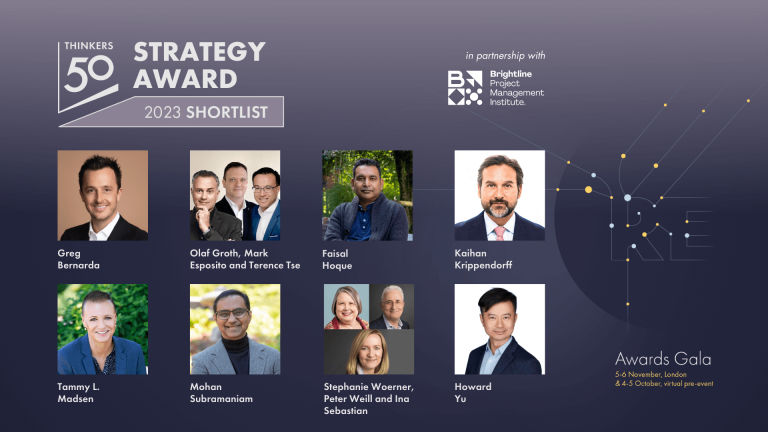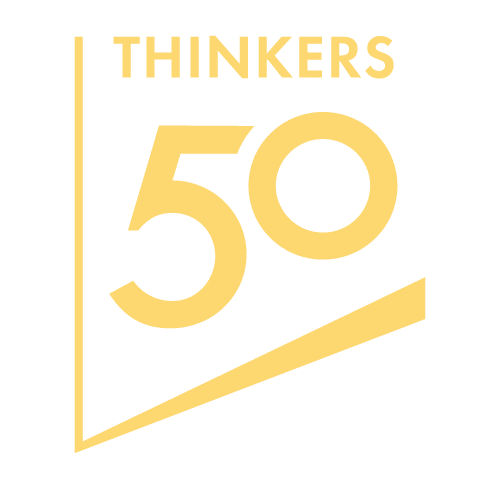

By Doug Ready, Senior Lecturer, MIT Sloan; Founder, ICEDR
As companies set their sights on the future they seem to fall into one of two camps: those guided by inside/out thinking and those by outside/in thinking. The role of the corporation guided by inside/out thinking is to achieve sustainable, profitable growth. An outside/in philosophy places the company’s core purpose at the heart of its business model, with the view that a collective, dedicated effort toward a higher goal will produce positive business outcomes as well.
Since it has become almost a threadbare comment to say that a company’s talent strategy should be closely aligned with its enterprise and business strategy, it seems essential to examine what role a company’s talent strategy plays under each philosophical umbrella. Given the thesis above, an inside/out talent philosophy will be guided by the logic that capabilities are built in pursuit of strategies that are crafted to fulfill a well-articulated vision. An outside/in talent philosophy, on the other hand, is guided by the desire to unleash the power of employees’ passion in pursuit of a collective ambition. A key question arises: Is one talent philosophy superior to the other? I would argue the answer is no.
When Alan Mulally led Ford Motor Company through its radical transformation he was guided, rightly so, by inside/out thinking- Ford would do whatever it would take to build the capabilities it needed to become competitive once again. He stripped costs, drastically reduced the company’s work force and placed a premium on innovation and product quality. Mulally built the strategic, organizational and talent capabilities Ford needed to not only survive but to thrive. With the talent that survived and with an influx of new blood, Mulally then built a team based upon his now-famous working together philosophy.
Now consider the approach taken by Pascal Soriot, the recently appointed CEO of Astra Zeneca. Early in his tenure Soriot faced an aggressive takeover bid by Pfizer- at a time when his company’s product pipeline was in trouble, its innovation-making capabilities were being questioned, and its cost discipline was sub-par. Reflecting on what it would take to bring Astra Zeneca back to profitability, Soriot challenged his senior staff and scientists to state publicly why they were proud to work at the drugs company and what hole there would be in the world if the company didn’t exist. Tapping into the passion his employees felt for developing products that helped save lives, Soriot brought the company together- enough to fend off the Pfizer takeover attempt and enough to give the company the chance it needed to get Astra Zeneca back on track. He subsequently made the tough choices of cost cutting and realigning the company’s portfolio and pipeline development processes.
Both approaches worked remarkably well, and in my view, both CEOs are incredibly successful leaders: one driven by inside/out thinking and one by outside/in. Talent leaders need to be ready to design and execute a human capital strategy that supports both philosophies when circumstances (and CEOs) change.

Thinkers50 Limited
The Studio
Highfield Lane
Wargrave RG10 8PZ
United Kingdom

Thinkers50 Limited
The Studio
Highfield Lane
Wargrave RG10 8PZ
United Kingdom

Thinkers50 Limited
The Studio
Highfield Lane
Wargrave RG10 8PZ
United Kingdom
| Cookie | Duration | Description |
|---|---|---|
| LANG | 9 hours | Linkedin set this cookie to set user's preferred language. |
| nsid | session | This cookie is set by the provider PayPal to enable the PayPal payment service in the website. |
| sp_landing | 1 day | The sp_landing is set by Spotify to implement audio content from Spotify on the website and also registers information on user interaction related to the audio content. |
| sp_t | 1 year | The sp_t cookie is set by Spotify to implement audio content from Spotify on the website and also registers information on user interaction related to the audio content. |
| tsrce | 3 days | PayPal sets this cookie to enable the PayPal payment service in the website. |
| x-pp-s | session | PayPal sets this cookie to process payments on the site. |
| __cf_bm | 30 minutes | This cookie, set by Cloudflare, is used to support Cloudflare Bot Management. |
| Cookie | Duration | Description |
|---|---|---|
| l7_az | 30 minutes | This cookie is necessary for the PayPal login-function on the website. |
| Cookie | Duration | Description |
|---|---|---|
| CONSENT | 2 years | YouTube sets this cookie via embedded youtube-videos and registers anonymous statistical data. |
| _ga | 2 years | The _ga cookie, installed by Google Analytics, calculates visitor, session and campaign data and also keeps track of site usage for the site's analytics report. The cookie stores information anonymously and assigns a randomly generated number to recognize unique visitors. |
| _gat_gtag_UA_10408481_1 | 1 minute | Set by Google to distinguish users. |
| _ga_ZP8HQ8RZXS | 2 years | This cookie is installed by Google Analytics. |
| _gid | 1 day | Installed by Google Analytics, _gid cookie stores information on how visitors use a website, while also creating an analytics report of the website's performance. Some of the data that are collected include the number of visitors, their source, and the pages they visit anonymously. |
| Cookie | Duration | Description |
|---|---|---|
| NID | 6 months | NID cookie, set by Google, is used for advertising purposes; to limit the number of times the user sees an ad, to mute unwanted ads, and to measure the effectiveness of ads. |
| test_cookie | 15 minutes | The test_cookie is set by doubleclick.net and is used to determine if the user's browser supports cookies. |
| VISITOR_INFO1_LIVE | 5 months 27 days | A cookie set by YouTube to measure bandwidth that determines whether the user gets the new or old player interface. |
| YSC | session | YSC cookie is set by Youtube and is used to track the views of embedded videos on Youtube pages. |
| yt-remote-connected-devices | never | YouTube sets this cookie to store the video preferences of the user using embedded YouTube video. |
| yt-remote-device-id | never | YouTube sets this cookie to store the video preferences of the user using embedded YouTube video. |
| yt.innertube::nextId | never | This cookie, set by YouTube, registers a unique ID to store data on what videos from YouTube the user has seen. |
| yt.innertube::requests | never | This cookie, set by YouTube, registers a unique ID to store data on what videos from YouTube the user has seen. |
| Cookie | Duration | Description |
|---|---|---|
| DEVICE_INFO | 5 months 27 days | No description |
| loglevel | never | No description available. |
| m | 2 years | No description available. |
Thinkers50 Limited has updated its Privacy Policy on 28 March 2024 with several amendments and additions to the previous version, to fully incorporate to the text information required by current applicable date protection regulation. Processing of the personal data of Thinkers50’s customers, potential customers and other stakeholders has not been changed essentially, but the texts have been clarified and amended to give more detailed information of the processing activities.